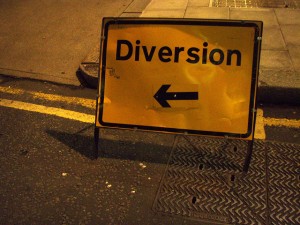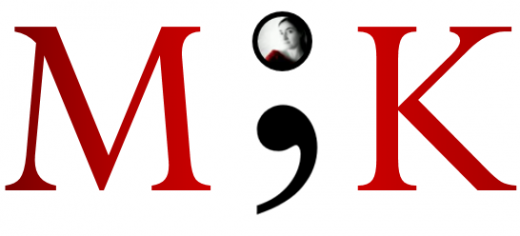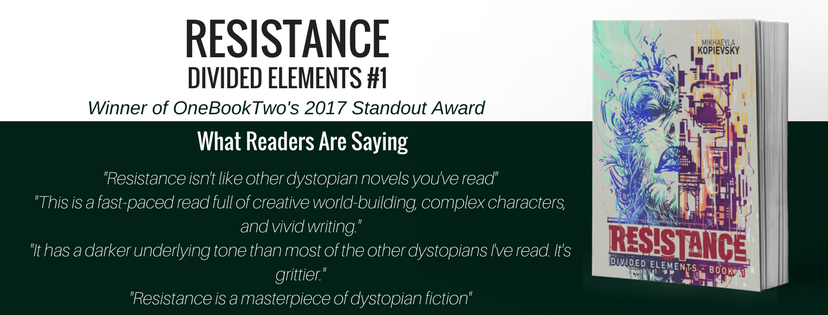by Mikhaeyla Kopievsky
I think about story structure. A lot. I’ve read countless books and studied hundreds of movies to gain a deeper understanding of narrative structure. I’ve reviewed the classic philosophies of act, scene and beat structure – from the Three Act Structure, to the Eight Sequences, and beyond to the 15 Beats. There is a plethora of information out there, in writing guides, on websites and forums, in blog posts, and from seminars and conferences. It can be a lot to take in, and over the past year I have worked my way through them to try and translate them into a language and format my brain can understand. And, this morning, I think I have had my enlightenment moment: Everything you need to know in order to understand narrative structure – whether you write screenplays or novels – can be boiled down to the Five Turning Points and the Gaps Between them.
Warning – this is going to be long. It would have to be to give you everything you need to know about story structure in one blog post 🙂
The Five Turning Points – A Shift in Direction
The Five Turning Points are the five key events in your story where the narrative shifts direction. It’s worthwhile spending some time discussing what a ‘shift in direction’ actually entails. For me, a shift in direction can be either character-driven or plot-driven.
For character-driven shifts, we see either a shift in technique, in action or in motivation (you can read more about character-driven shifts and how they impact on your second act here)
- A shift in technique is where a character maintains the same goal (the why) and the same action (the what), but changes their technique in undertaking the action (the how). e.g. My goal is to reach the mountain summit. My action is to trek along the mountain path. My technique changes from doing it alone, to joining a group and sharing the burden.
- A shift in action, is where a character maintains their goal, but changes their action. e.g. My goal is still to reach the summit, but instead of trekking to get there, I decide to charter a helicopter to drop me off.
- A shift in goal, is where the character rethinks their entire motivation and finds either a) a more worthy goal or b) the deeper, subconscious goal that had yet to be recognised. e.g. I start to wonder why I want to reach the summit. a) Is it to break the world record and become wildly famous and is that still important when I see the local villages along the way struggling with poverty? OR b) Is it to prove to myself that I am worthy of recognition and is there a better way I can do this?
For plot-driven shifts, we see either an escalation, a de-escalation, or an about-face.
- An escalation takes a value and increases it. In this instance, an escalation would be a situation that was bad and then became worse, or that was urgent and then became desperate, or that was scary and then became deadly.
- A de-escalation takes a value and decreases it. In this instance, a de-escalation would be a situation that was impossible and then became difficult (but achievable), or that was awe-inspiring and then became mildly interesting, or that was wildly over-the-top and then became merely eccentric.
- An about-face takes a value and morphs it into its opposite. In this instance, an about-face would be a situation that was deadly and then became life-giving, that was interesting and then became nauseating, that was mournful and then became joyful.
The Gaps in Between – Action & Reaction
Having established our five turning points as the key shift in direction our narrative takes, we can begin to understand that the gaps in between are the spaces in which we can show how the shift has impacted on our story’s world and characters and how their reactions create the necessary environments for the next turning point (and its impact) to logically (albeit sometimes surprisingly) occur.
Essentially, the gaps present the momentum of the story and set up the tone of action. If the turning points are subtle escalations, increasing only by degrees, then the gaps between will necessarily produce a slower pace involving smaller changes in story world and characters and setting a context that is only slightly different from the one to be presented in the next gap – all of which makes for a very slow (and, possibly, boring) story.
If, however, the turning points are more dramatic, then the gaps will need to work hard to show the significant impacts on the story world and characters and to set-up a sharp contrast between the new world/character state and the state that will be produced by the next turning point – producing lots of tension, conflict and change.
This is all pretty cerebral at the moment, so why don’t we get stuck in and look in detail at each of the five turning points and their impact on the gaps that cushion them…
Turning Point 1 – the DISTURBANCE – and Gap A – the SET-UP
The disturbance is pretty much what it sounds like – something to unsettle the normal state of affairs and foreshadow a bigger change on the horizon. Known also as the Inciting Incident, it is the event that affects your story’s protagonist but does not directly engage them yet in the core conflict.
Here are some examples from popular movies:
- BACK TO THE FUTURE – Marty McFly sees his friend Doc gunned down by Libyan Terrorists
- CRAZY STUPID LOVE – Cal Weaver’s wife, Emily, abruptly announces that she wants a divorce
- DISTRICT 9 – Wikus is sprayed with black alien goop as he carries out his eviction of District 9 residents
- FINDING NEMO – Marlin watches in horror as his son, Nemo, is captured by divers
- JUNO – Juno MacGuff sleeps with her boyfriend, Paulie Bleeker
- OBLIVION – The Hydro rigs are destroyed by the scavengers leading to the discovery of an unknown signal
As you can see from these examples, sometimes the disturbance personally touches the protagonist (Crazy Stupid Love, District 9, Juno), sometimes it happens to a loved one (Finding Nemo, Back to the Future), and sometimes it happens to someone completely unrelated or an inanimate object (Oblivion). Sometimes it is caused by the protagonist (Juno), sometimes it happens to the protagonist (Back to the Future, Crazy Stupid Love, District 9, Finding Nemo) and sometimes it happens to something indirectly related to the protagonist (Oblivion). What they all have in common, is that each Disturbance poses a key question – What will your protagonist do now?
These characterisations are critical for writing the gaps between. With the first turning point (as with all turning points), there are two gaps between. For the Disturbance, there is the gap between the story’s very beginning and the turning point, and there is the gap between the turning point and the next turning point (in this case the Lock In). Let’s focus on Gap A – The Set-Up.
Gap A is all about detailing the current state of play, the status quo, which will provide the context as to why the Disturbance is so unsettling, so full of potential for further problems, so disturbing.

Let’s take Finding Nemo as our example – if Marlin is always losing his kids to divers, or if he has hundreds of other kids and one lost fish is but a drop in the ocean (*boom, tish*), seeing Nemo captured is likely to be only a mild disturbance – less a disaster and more an irritation. However, this is far from the truth – Marlin is an over-protective and loving father who is still struggling, thanks to a barracuda attack, with the loss of his wife and entire clutch of eggs (besides Nemo). This context is critical for giving depth and sharpness to the Disturbance.
Lesson Learnt: Use your Gap A to build the necessary details that will give your Disturbance maximum impact.
Gap B – the LACK OF ACTION – and Turning Point 2 – the LOCK IN
After the first turning point, we arrive in Gap B, which is typically characterised by a lack of action. In the Hero’s Journey this is called the Rejection of the Call, but not all Gap B’s are about actively rejecting the call to action a disturbance typically presents. Sometimes there are other motivations that see our protagonist not yet directly engaging with this new conflict – no resources, no skills, no recognition of the disturbance and what it could mean.
Gap B is all about building the story towards the second turning point, the Lock In, where the protagonist is now willing and/or able to directly engage in the core conflict.

Let’s use Back to the Future as our example – the Lock In is Marty ending up in 1955 with no way of getting back to the future. Gap B sees Marty horrified by Doc’s brutal assassination, but the assassination is not what causes Marty to jump into the delorean. It is only when he is in personal danger of being shot that he needs to flee in the delorean. Marty initially fails to act for two reasons – 1) he doesn’t have the emotional stability to engage (he is in shock) and b) he doesn’t have the personal motivation to engage (he is still relatively safe).
To get Marty into the delorean and back to 1955, the writers needed to take away these two obstacles to action – they turned the gunfire towards Marty, breaking him out of his shock and giving him a reason to get into the delorean.
Lesson Learnt: Identify the obstacles that are stopping your protagonist from responding to the Disturbance (these ideally will have been foreshadowed in Gap A, the Set-Up) and use Gap B to remove them.
Gap C – the PLAN A – and Turning Point 3 – the MIDPOINT
When your protagonist has no excuse for not responding to the Disturbance (or, alternatively, has no choice but to engage directly with the conflict), you’ve arrived in Gap C – what I call PLAN A and what others call the First Plot Point, and what formally announces the transition between Act One and Act Two of your narrative.
The distinction between no excuse and no choice is an important one. Many people say that the transition from the first act and second act should come from the protagonist actively choosing to engage. I don’t agree. Sometimes the lock in can be a choice, but sometimes it can be forced.
Take Juno, for example. The Lock In is when Juno discovers she is pregnant. There is no choice – it’s a fact. A situation she didn’t choose to be in, but finds herself in, nonetheless. Similarly, there are stories where the Lock In sees the protagonist kidnapped – they don’t choose to be, but are nonetheless.
What defines the Lock In is a situation where the protagonist becomes directly engaged and personally affected by the conflict, whether they choose to be or not.
It is the decision about how they will respond to this fact is what sets up Gap C and forms the basis of their Plan A.
For Juno, she is faced with numerous options for how to deal with this inconvenient and unwelcome news. Her decision to adopt out her baby is what sets her on the path of her Plan A – to give her baby to prospective adoptive parents Mark and Vanessa.
But, there is a reason I call it the Plan A. This plan, while seemingly a good one at the time, is doomed to fail. Why? Because of the Midpoint.
We’ve talked a lot about turning points – well, the Midpoint is the mother of all turning points. It is, in most cases, the most dramatic shift in direction – requiring our protagonist to develop an entirely different plan. As discussed above, the Midpoint shift can be plot-driven or character-driven, but it needs to be big enough to change the direction of your protagonist – not just a tinkering at the edges of what they want to do, but a wholesale re-think of what they are doing and what they should do.

In Juno, it is the discovery that Mark wants to leave Vanessa and his confession that he is not ready to raise a child.
Like the Disturbance, all Midpoints should have readers/viewers asking – What will the protagonist do now?
Lesson Learnt: Know your midpoint from the beginning and build a Plan A that: i) given what has happened in Act One, is reasonable at the time, but ii) given what will happen at the Midpoint, is doomed to fail. Use your Gap C to either show i) the Plan A failing at each turn or ii) the Plan going along swimmingly (an unknowingly towards its eventual doom).
Gap D – the PLAN B – and Turning Point 4 – the CULMINATION
So, now your protagonist is faced with a doomed plan – they could either see it coming or it took them completely by surprise. Either way, they need a new plan. Gap D takes the changes to the story’s world and character development that occurred during Gap C and uses them as the necessary motivations, resources and opportunities for your protagonist to develop, and start implementing, their Plan B.
Unfortunately, Plan B is also doomed to fail. Not because it is a bad plan (like Plan A), but because of either a) the protagonist’s debilitating weakness or b) the antagonist’s uncompromising strength (or c) both of the above).
That is the core of what happens at Turning Point 4, the Culmination – it is your protagonist’s darkest moment, the point where they have seemingly given their all, but have been found wanting in the face of the antagonist’s dominance.
Happily, there are two sides to the Culmination – 1) the darkest moment and 2) the silver lining. The silver lining is the moment when the protagonist has an ‘a-ha!’ moment – when all of the lessons they have learnt and skills they have developed along the Plan B journey give them what they need to head towards the fifth Turning Point – the Final Battle.

In Crazy Stupid Love, Cal has realised his original plan to get over his wife and get good with the ladies is doomed when he realises he is still in love with his wife and the ladies he got good with are crazy. He quickly shifts to his Plan B – win his wife back. It’s a good plan, but ultimately also doomed to fail because Cal is prone to bad decisions and rash actions (his greatest weakness) – like losing his mind when his daughter turns up with bad boy Jacob, and his antagonist (his failing marriage) gains strength from the arrival of his wife’s romantic interest and a delicate matter involving a lovestruck babysitter.
The role of Gap D, therefore, is to:
- Foreshadow the protagonist’s weakness and the antagonist’s strength
- Lull the protagonist into a false sense of security as their Plan B continues to look the winner
- Provide them with snippets of important knowledge, skills, traits and resources that will be the key to a final battle with the antagonist.
Lesson Learnt: Use your Plan B to pull the wool over your protagonist’s eyes – keep them focused on, and confident in, their Plan B while a) sowing the seeds of currently irrelevant, but potentially crucial knowledge, skills, traits and/or resources, and b) hinting at the depths of the protagonist’s greatest weakness and antagonist’s greatest strength.
GAP E – the RE-AWAKENING – and Turning Point 5 – the FINAL BATTLE
Your protagonist has come through their darkest moment and has seen the silver lining – welcome to Gap E, the Re-Awakening. This Gap is all about taking the little threads of hope you have sprinkled through the Second Act and helping your protagonist piece them together and strengthen them until they form a weapon that is capable of both a) destroying the protagonist’s weakness and b) overcoming the antagonist’s strength.

The operative word here is capable. This new found personal discovery and growth must give the protagonist (and the reader/viewer) hope that the protagonist will prevail. Hope, but not certainty (because where is the drama in that?).
Building an effective Turning Point 5 – the Final Battle – and a strong Gap E – the Re-Awakening – is fundamentally built upon a sound understanding of the protagonist’s greatest weakness and their growing strengths, the antagonist’s greatest strength and hinted weakness, and the key factors that will bolster the protagonist whilst simultaneously undermining the antagonist.
In Oblivion, the Re-Awakening is Jack #49 reading the Flight Recorder and understanding what had happened to the Odyssey – thus gaining the critical knowledge and resolve he needs to carry through with his final battle plan against Tet – sacrificing himself and detonating the nuclear bomb aboard his ship to destroy Tet – relying on Sally’s weakness to let the ship in under the impression that it is Julia who is inside.
Lesson Learnt: Build a Final Battle that centres on the protagonist’s recently realised and newly strengthened advantages versus the antagonist’s hinted weakness. Use Gap E to show how the protagonist develops these strengths and hint at how they may be useful against the previously invincible antagonist.
GAP F – the DENOUEMENT
The protagonist and antagonist face each other in an epic battle. The protagonist digs deep and finds the inner strength to prevail. End of story. Right? Um. No. The protagonist has won, the antagonist is defeated – but has the protagonist achieved their goal? And how has the battle’s outcome created a new status quo?

Gap F – the Denouement (a fancy French word that literally means ‘to unknot’, and essentially means the conclusion or resolution of a plot) – answers the question – Okay, so the protagonist won, but…?
But, did he get the girl? But, did she get to go back home to Kansas? But, did they live happily ever after?
It’s where you wrap up the loose ends and give a sense of finality to the overall story – recognising that the antagonist was just the major/last obstacle in between the protagonist and their goal – and that the protagonist still, at the end of the battle, needs to reach out and grab that goal.
The Denouement should also, ideally, present a hint at what that means – begin to answer the question of what impact will the protagonist achieving their goal have? In this way, the Denouement is like a twisted mirror image of the Set-Up – establishing a new status quo, a new world order that is ripe for other disturbances…
And, there you have it. My complete road map to story structure.
Let me know in the comments whether you’ve found it useful!
Liked this? Want more?
You can grab your own copy of Resistance (Divided Elements #1) to read now. Available as a paperback or ebook on your favourite device.




Great reading youur blog post
LikeLiked by 1 person
Mikhaeyla, thanks for this effort. I really found this useful and shared the link with my online writer’s group.
LikeLike
Great to hear it! Would love to hear if others in your group found it useful
LikeLike
Thank you! This is exactly what I needed! I always have a great skeleton of a plot but struggle to fill in the meat.
LikeLike
You’re welcome, BJ! I still struggle with it and find myself coming back to this post to help me out 🙂
LikeLike
Reblogged this on BJ Sikes, author and commented:
This is exactly what I needed to fill in the gaps between plot points!
LikeLike
Thanks JA 🙂 I still refer to this post, myself, when I’m plotting a new WIP or stuck in the drafting/editing stages…
LikeLike
Mikhaeyla, this is SO good! I’ve been trying to boil all this down as well. I’m pinning this article to come back to and read when I don’t have children crowding around me trying to show me Lego creations.
So glad you wrote all this out!
LikeLike